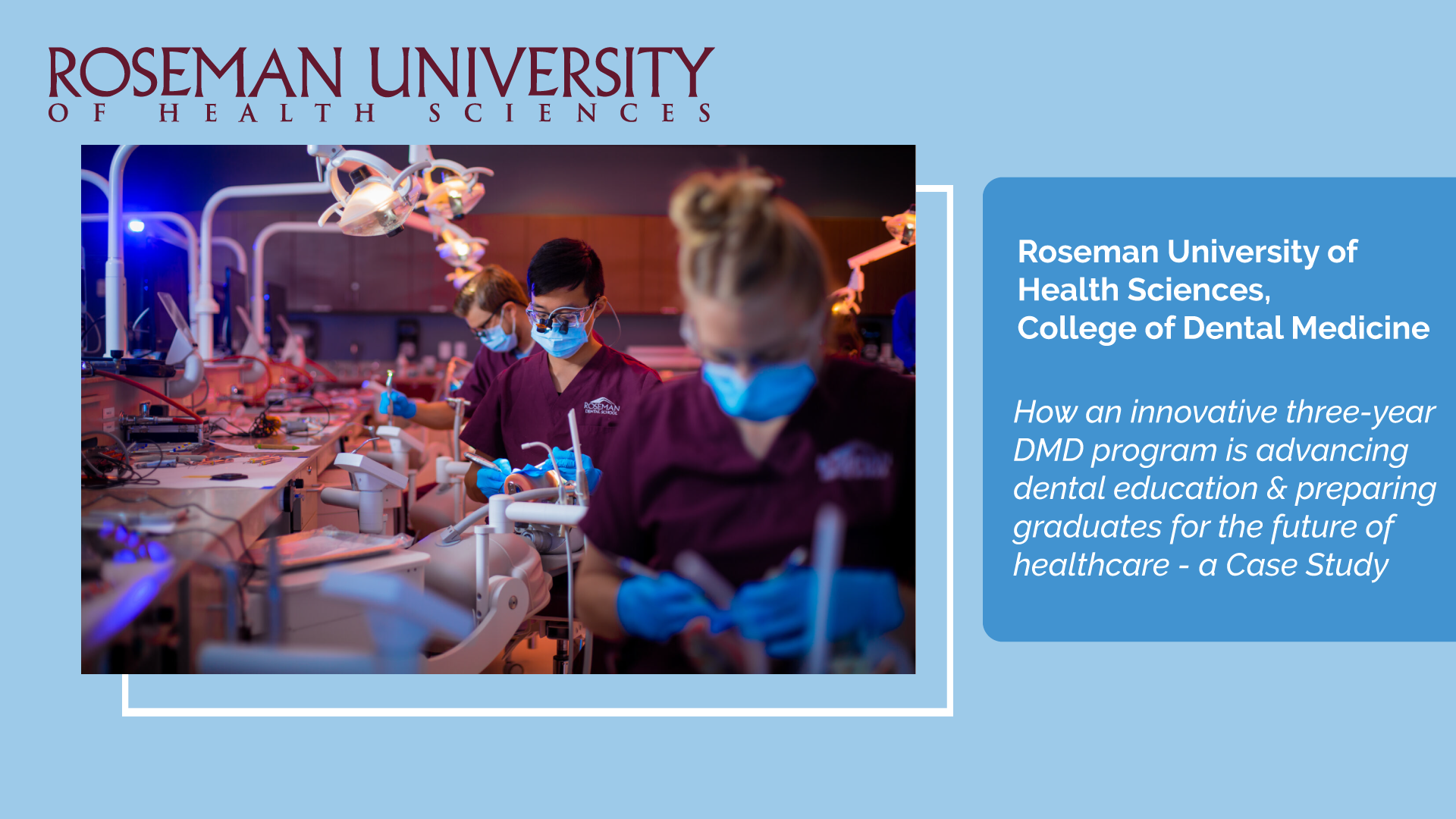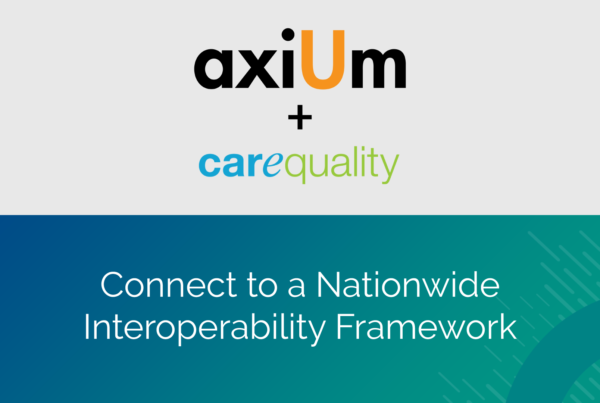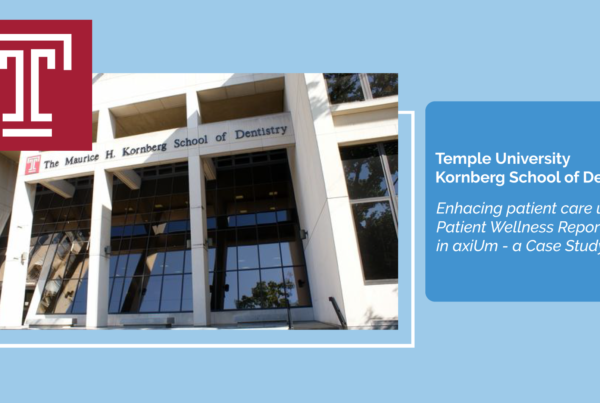Overview
Nestled amongst the breathtaking mountain ranges of South Jordan, UT, the College of Dental Medicine at Roseman University of Health Sciences (Roseman) boasts an impressive roster of dedicated faculty and staff committed to providing the highest quality education and clinical experiences.
Roseman’s dental programs – Doctor of Dental Medicine (DMD), Orthodontics (AEODO) Residency, General Dentistry (AEGD) Residency, and Continuing Education – have offered dental students an unparalleled learning environment since opening in 2011. The inseparable nature of their lifelong colleague culture and Six-Point Mastery Learning Model® is what makes Roseman so unique. Their programs strive to improve the oral health of the public with special attention to underserved individuals and families by educating dentists, conducting education and clinical research, and providing community-based health services and healthcare leadership.
Their new DMD, an innovative three-year program with an integrated curriculum, teaches students to collaborate within and lead teams and prepares graduates for the future of healthcare.
Since 2015, Roseman has been using axiUm dental academic software to manage its clinical and educational business units. axiUm forms the basis of their Electronic Health Record (EHR) and is the software of choice for more than 90% of dental colleges, universities, and teaching hospitals in North America.
So, what is the secret to Roseman’s success? And what deciding factors led to their transformation from a four-year to a three-year program? To find the answer, we sat down with the Dean and Professor of Roseman’s College of Dental Medicine – Dr. Frank W. Licari, DDS, MPH, MBA – to discuss the university’s innovative three-year program and how it helps prepare dental students for the future.
The Reality
Since 2011, Roseman has offered a traditional four-year dental program with class sizes of one hundred students. In 2017 they began analyzing the cost of dental students’ education versus the return on investment. It soon became clear that the debt-to-income ratio was alarmingly disproportionate. In other words – upon graduation, their debt would outpace their salaries. At this point staff realized they had to make significant changes immediately.
The Answer: Three-Year Program
To help reduce debt and make the students’ dental education cost more affordable, Roseman’s staff devised an innovative three-year DMD program. The new course kicks off this year in June 2023, and the program is data-driven, focusing on a team-based clinical education model. This new structure allows Roseman to place dental students in the clinic as early as possible, which enables them to begin working on patients sooner than the traditional four-year model.
“We’ve changed the way we teach and assess,” said Dr. Licari. “The way we think of dental education now is one that’s much more focused on understanding what it means at the patient care level and how to treat patients better.”
The Benefits for Dental Students
Integrated Curriculum
An integrated curriculum ensures the biomedical, simulation and clinical courses are fully integrated throughout the 36-month program. Roseman’s Six Point Mastery Learning Model consists of Block Curriculum, Active and Collaborative Learning, Competency-based Education, Assessment Learning, Early Experiential Learning, and a Classroom Design that facilitates learning. “Students take one course at a time,” said Dr. Licari. “Once they pass a course, they move on to the next one. There are no semesters, no quarters, and no final exams. The program simply follows a logical order.”
Increased Patient Volume
With the new program, Roseman’s College of Dental Medicine moves away from the traditional dental school format of one chair, one patient, and one student. The four-year system allows students only to see one or two patients a day, limiting their patient experience to (for example) fifty or sixty patients in their entire educational training. However, this does not adequately prepare students for the volume they will experience in their careers. In reality, dental providers will typically treat twenty to thirty patients per day.
With the new three-year model, students will now treat four to six patients daily (possibly more). “Treating more patients per day provides them with an overall higher volume of patients,” remarked Dr. Licari. “Students are gaining more experience compared with only seeing one to two patients a day; this is a much more realistic scenario of what their careers will look like in the future.”
Financial Savings
Dental students will save on living expenses and reduce tuition by 25% by eliminating the fourth year. “We began looking at what the cost projections might look like for a two percent, four percent, and six percent tuition increase,” said Dr. Licari. “A four percent tuition increase (for example) was projecting in 17 to 20 years close to a million dollars per year in debt, including living expenses. We realized the only way to fix this was to prevent it from happening.”
Extra Year of Income
Eliminating the fourth year allows dental students to add a year of average income. In other words, they’re graduating sooner, able to enter private practice a year earlier, and they’re earning instead of plunging further into debt.
Applications for the new three-year program are currently being accepted. Students may apply from Roseman’s website here. Dental students presently enrolled in the four-year program will graduate in April 2026; students taking the three-year program will graduate in June 2026. They estimate that 200 students will graduate in 2026.
axiUm Adapts to New Three-Year Program
In 2015 Roseman installed axiUm to manage its dental school operations. Moving away from their older EHR system to axiUm was a significant milestone for the school. “The problems and issues we had with the old electronic health record miraculously went away once we installed axiUm,” said Dr. Licari.
Staff were able to produce the critical reports they required to run their clinical, educational, and business operations successfully and securely, and meet accreditation standards. And their axiUm EHR has assimilated seamlessly into the new 36-month program. No changes to the software were required.
“We didn’t need to make changes to the axiUm system to fit the new three-year program,” remarked Dr. Licari. “The software functions extremely well for us as is. It simply does what we want it to do, and for that, we’re grateful.”
The Future
Roseman has built a brand-new clinic to keep up with new technology and they’ve switched to an all-digital environment. Everything is designed in a modern modular fashion – the walls, the floors, even the ceilings; this allows them the flexibility to make changes if needed. The chairs, for example, track the time a patient occupies a seat. Faculty, staff and students wear badges which integrate with a real-time locating system in the ceiling. And Roseman’s CODM’s clinical outcomes research and education team works with machine learning and artificial intelligence programs. “Our new facility is likely the most technologically advanced dental school clinic in the US right now,” claimed Dr. Licari. “We’re data-driven and therefore big into data analysis, which helps us identify trends and improve our processes.”
Their goal is to become a large group practice look-alike. Dr. Licari and his team feel this is the best model for their dental students. “Our educational model equips dental students to enter seamlessly into a large group practice environment, and we certainly think our electronic health record (axiUm) is part of that,” he said. “When students graduate from Roseman, they will be prepared to be team players, to work in teams, and become team leaders. They will go confidently go into a larger practice environment, knowing they can be successful.”





